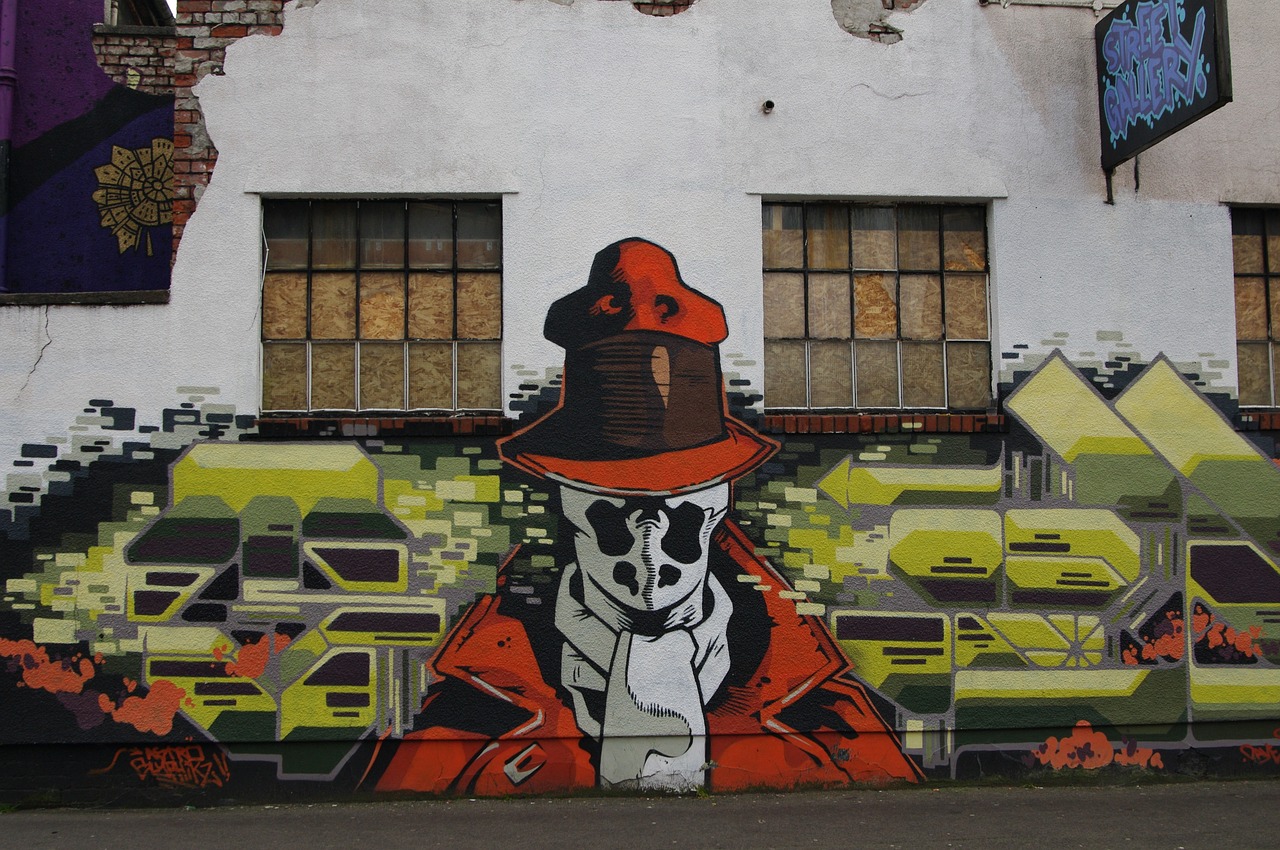The Work of Alan Turing in Computing and Cryptography
Alan Turing, a name synonymous with brilliance in the realms of computing and cryptography, is often hailed as the father of modern computer science. His groundbreaking ideas and inventions not only laid the foundations for the digital age but also played a pivotal role during one of history's most tumultuous periods: World War II. Turing's work transcends mere academic achievement; it embodies a blend of innovation, perseverance, and a profound understanding of the complexities of logic and mathematics. As we delve into his life, we uncover layers of intellectual curiosity and a relentless pursuit of knowledge that shaped not just his destiny but also the future of technology.
Born in 1912 in London, Turing's journey began with a keen interest in mathematics and science. His education at King’s College, Cambridge, where he earned a degree in mathematics, was just the beginning. The intellectual environment nurtured his passion for problem-solving and abstract thinking. Turing's early exposure to the works of mathematicians like Kurt Gödel and David Hilbert ignited a spark that would lead him to develop revolutionary concepts that are still relevant today. His ability to think outside the box allowed him to envision a machine that could perform any computation given the right algorithm, a concept that would later become known as the Turing Machine.
But Turing's contributions weren't limited to theoretical frameworks. His work during World War II at Bletchley Park, where he helped crack the infamous Enigma code, showcased his ability to apply his theories in practical, high-stakes scenarios. The implications of his work were monumental, significantly shortening the war and saving countless lives. Turing's journey through the realms of computing and cryptography is not just a story of individual achievement; it is a testament to the power of collaboration and the impact of innovative thinking in overcoming challenges.
As we explore Turing's legacy, we will see how his ideas continue to influence modern technology, from the development of artificial intelligence to the ongoing discussions about machine learning and ethics in computing. Turing's life and work remind us that the quest for knowledge is never-ending and that the seeds of innovation can sprout in the most unexpected places. Join us as we unravel the remarkable story of Alan Turing, a man whose intellect and vision shaped the digital landscape we navigate today.
- What is the Turing Machine? - The Turing Machine is a theoretical construct that defines what it means for a function to be computable. It serves as a fundamental model for understanding algorithms and computation.
- How did Turing contribute to World War II? - Turing played a crucial role in breaking the Enigma code, which was used by the Germans for secure communication. His work at Bletchley Park helped the Allies gain significant intelligence advantages.
- What is the Turing Test? - The Turing Test is a measure of a machine's ability to exhibit intelligent behavior that is indistinguishable from that of a human. It has sparked extensive debates regarding artificial intelligence.
- Why is Turing's legacy important today? - Turing's contributions laid the groundwork for modern computing and artificial intelligence, making his work relevant in discussions about technology, ethics, and the future of machine intelligence.

Early Life and Education
Alan Turing was born on June 23, 1912, in London, England, into a family that valued education and intellectual pursuits. From an early age, Turing exhibited signs of exceptional intelligence and curiosity. His parents, Julius and Ethel Turing, encouraged his academic interests, which laid the groundwork for his future contributions to mathematics and computing. Growing up in an environment that emphasized learning, Turing often found himself captivated by the mysteries of logic and mathematics.
After completing his primary education, Turing attended Sherborne School, a prestigious boarding school in Dorset. It was here that he first encountered the world of science and mathematics in a more structured way. Turing's interests were particularly piqued by the works of great mathematicians such as Isaac Newton and Gottfried Wilhelm Leibniz, which influenced his thinking and approach to problem-solving. However, it was not just the formal education that shaped his intellect; Turing was also known for his love of reading and exploring various scientific concepts independently.
In 1931, Turing enrolled at King's College, Cambridge, where he studied mathematics. During his time at Cambridge, he was exposed to the groundbreaking ideas of famous mathematicians like G.H. Hardy and John Edensor Littlewood, who were instrumental in shaping his understanding of mathematical theories. Turing's exceptional talent was recognized when he was elected a Fellow of King's College in 1935, just a year after graduating. This honor was a testament to his outstanding academic performance and potential in the field of mathematics.
It was during his studies at Cambridge that Turing began to develop his theory of computation, a concept that would later become crucial in the evolution of computer science. His interest in the foundations of mathematics led him to explore the limits of what could be computed, ultimately leading to the formulation of the Turing Machine—a theoretical construct that would revolutionize the way we understand algorithms and computation.
After completing his degree, Turing continued his education at the Princeton University in the United States, where he pursued his Ph.D. under the guidance of the renowned mathematician A. M. Turing. His time at Princeton further solidified his expertise in mathematical logic and computation, and it was here that he expanded on his earlier work, paving the way for his future innovations.
Turing's early life and education were marked by a relentless pursuit of knowledge and an insatiable curiosity about the world around him. These formative experiences not only shaped his intellectual capabilities but also instilled in him a deep-seated passion for mathematics and its applications. As we delve deeper into Turing's life, we will see how these early influences played a pivotal role in his groundbreaking work in computing and cryptography.

The Turing Machine
Alan Turing's introduction of the Turing Machine in 1936 was nothing short of revolutionary. Imagine a machine that could simulate any algorithm, a theoretical construct that laid the groundwork for modern computing. Turing proposed this concept to explore the limits of what can be computed, and in doing so, he opened the door to a world where machines could perform complex calculations and solve problems that were previously thought to be the exclusive domain of humans.
The Turing Machine is a simple yet powerful model that consists of a tape, a head that reads and writes symbols on the tape, and a set of rules that dictate its operations. This model can be visualized as follows:
| Component | Description |
|---|---|
| Tape | A theoretically infinite strip divided into cells, each capable of holding a symbol. |
| Head | Moves along the tape, reading symbols and writing new ones based on the machine's rules. |
| State Register | Stores the current state of the machine, guiding its operations. |
| Rules | A set of instructions that dictate how the machine reacts to the symbols it reads. |
But why is this important? The significance of the Turing Machine lies in its ability to formalize the concept of computation itself. Turing showed that any problem that can be solved by an algorithm can be solved by a Turing Machine. This means that all modern computers, regardless of their complexity, can be understood as variations of this basic model. In a way, Turing's machine is like the blueprint for every computer that exists today, from the simplest calculators to the most advanced supercomputers.
Moreover, Turing's work was not just theoretical; it had practical implications that would resonate through the decades. The Turing Machine inspired the development of programming languages and established the foundation for computer architecture. Turing's ideas about algorithms and computation have influenced various fields, including mathematics, engineering, and even philosophy, as they challenge our understanding of what it means to think and to be intelligent.
In essence, the Turing Machine serves as a bridge between abstract mathematical theories and practical computing applications. It has sparked discussions about the nature of intelligence and the potential of machines to replicate human thought processes. Turing's genius lies not only in his invention but also in his foresight; he envisioned a future where machines could think, learn, and evolve. This vision continues to drive advancements in artificial intelligence, making Turing's work ever more relevant in today's tech-driven world.
As we reflect on the impact of the Turing Machine, it's essential to recognize that it was more than just a theoretical construct. It was a catalyst for change, a spark that ignited the digital revolution. Without Turing's insights, we might still be grappling with the limitations of human computation, unable to harness the full potential of technology. The Turing Machine is a testament to the power of human ingenuity and the relentless pursuit of knowledge.
- What is a Turing Machine? A theoretical device that manipulates symbols on an infinite tape according to a set of rules, used to understand the limits of computation.
- Why is the Turing Machine important? It formalizes the concept of computation and serves as the foundation for modern computer science.
- How did Turing's work influence modern computing? His theories inspired the development of programming languages and computer architecture.
- What are some applications of Turing's concepts today? They are fundamental to artificial intelligence, algorithms, and software development.

Contributions to Cryptography
Alan Turing's contributions to the field of cryptography are nothing short of revolutionary. During World War II, he was thrust into a world of secrecy and intelligence, where his mathematical genius and innovative thinking would play a pivotal role in the Allied forces' efforts to decode the enemy's communications. The most notable of his achievements was his work on breaking the Enigma code, a complex cipher used by the German military to encrypt their messages. Turing understood that to understand the enemy, one had to first crack their codes, and he set out to do just that.
Turing's approach to cryptography was not merely about brute force; it involved a deep understanding of mathematical principles and logical reasoning. He developed a systematic method for analyzing the Enigma's encryption patterns, which was crucial given the machine's intricate design and the vast number of possible configurations it could produce. This work not only showcased Turing's brilliance but also highlighted the importance of algorithmic thinking in the field of cryptography.
One of Turing's most significant innovations was the creation of the Bombe machine, an electromechanical device that automated the process of codebreaking. The Bombe was designed to discover the settings of the Enigma machine by testing various combinations at speeds that were impossible for human operators. This technological advancement was a game-changer, allowing the Allies to decode critical messages in real-time, which ultimately contributed to their victory in the war.
To illustrate the impact of Turing's work, consider the following table that highlights key features of the Bombe machine:
| Feature | Description |
|---|---|
| Design | Electromechanical device capable of simulating the Enigma machine's settings. |
| Functionality | Tested multiple configurations simultaneously to find the correct settings. |
| Impact | Enabled rapid decoding of enemy communications, significantly aiding Allied operations. |
Moreover, Turing's work at Bletchley Park was characterized by collaboration with a diverse team of cryptanalysts. This environment fostered a spirit of innovation and teamwork that proved essential in overcoming the challenges they faced. Turing's ability to communicate complex ideas effectively helped galvanize his colleagues, leading to breakthroughs that would have been impossible in isolation. The synergy of minds at Bletchley Park demonstrated that great achievements are often the result of collective effort.
In summary, Alan Turing's contributions to cryptography during World War II not only changed the course of history but also laid the groundwork for modern cryptographic practices. His pioneering methods and inventions continue to influence the field, reminding us that the intersection of mathematics, logic, and technology can lead to profound advancements. Turing's legacy in cryptography is a testament to the power of human ingenuity in the face of adversity.
- What was the Enigma machine? The Enigma machine was a cipher device used by the German military during World War II to encrypt messages, making them unreadable to anyone who did not possess the correct settings.
- How did Turing break the Enigma code? Turing developed the Bombe machine, which automated the process of testing different settings of the Enigma machine to find the correct configuration for decoding messages.
- Why is Turing's work important today? Turing's principles of computation and cryptography have laid the foundation for modern computer science and cybersecurity practices, influencing how we protect information in the digital age.

The Bombe Machine
The Bombe machine, a remarkable invention by Alan Turing, was a pivotal tool in the quest to decipher the infamous Enigma code during World War II. This device wasn't just a machine; it was a beacon of hope for the Allies, representing the intersection of ingenuity and necessity in a time of crisis. Imagine a puzzle so complex that it could change the course of history—this was the Enigma, and Turing's Bombe was the key to unlocking it.
Turing's Bombe was designed to automate the process of codebreaking, significantly speeding up what would have taken human cryptanalysts an insurmountable amount of time. The machine operated on the principle of brute force—systematically trying every possible combination until it found the correct one. To put it simply, if you’ve ever tried to guess a friend's password by trying every possible combination, you can appreciate the sheer volume of possibilities Turing was dealing with. The Bombe reduced that guessing game from a daunting task to a manageable challenge.
The Bombe was not a single machine but rather a series of interconnected devices that worked in harmony. Each Bombe could test multiple settings of the Enigma machine simultaneously, which allowed the team at Bletchley Park to crack codes at an unprecedented rate. To illustrate its impact, consider the following table showcasing the Bombe's capabilities:
| Feature | Description |
|---|---|
| Speed | Could test up to 1000 Enigma settings per minute. |
| Complexity | Utilized a system of rotors and wires to simulate the Enigma's operations. |
| Teamwork | Required collaboration among mathematicians, engineers, and cryptanalysts. |
One of the most fascinating aspects of the Bombe was its ability to adapt. Turing and his colleagues used a process known as cribbing, which involved guessing parts of the plaintext message based on known phrases or contexts. This technique was akin to having a cheat sheet in a game of Scrabble—knowing a few letters could lead you to guess the entire word. The Bombe’s design allowed it to take these cribs into account, making it even more efficient.
However, Turing's Bombe was not without its challenges. The engineering required to build such a machine was groundbreaking, and the team had to overcome numerous technical hurdles. They had to ensure that the machine could handle the enormous amount of data generated by the Enigma's complex encryptions. This was a monumental task, akin to trying to build a bridge while the river was still flowing. Yet, through perseverance and innovation, Turing and his team succeeded, proving that human determination can triumph over even the most formidable obstacles.
In conclusion, the Bombe machine was more than just a tool for breaking codes; it was a symbol of human ingenuity and collaboration. Turing's invention not only played a crucial role in the Allied victory in World War II but also laid the groundwork for future advancements in computing and cryptography. Just as a master key can unlock many doors, the Bombe opened new pathways in our understanding of information processing and security.
- What was the primary purpose of the Bombe machine?
The Bombe machine was designed to decode messages encrypted by the Enigma machine during World War II. - How did the Bombe machine work?
It worked by systematically testing different settings of the Enigma machine to find the correct combination that would decrypt messages. - Why was Alan Turing's work significant?
Turing's work not only contributed to the Allied victory in WWII but also laid the foundations for modern computing and artificial intelligence.

Technical Innovations
Alan Turing's contributions to cryptography during World War II were not just groundbreaking; they were revolutionary. One of the most significant innovations he introduced was the design of the Bombe machine, an electromechanical device that played a crucial role in decoding the Enigma messages used by the Nazis. But what made the Bombe so special? It wasn't merely a machine; it was a culmination of Turing's deep understanding of mathematics, logic, and engineering. He faced numerous challenges while developing the Bombe, such as the complexity of the Enigma's wiring and the sheer volume of messages that needed to be processed.
To tackle these challenges, Turing implemented several key technical innovations that enhanced the Bombe's efficiency. For instance, he devised a method to reduce the number of possible settings of the Enigma machine, which drastically cut down the time needed to decode messages. This method involved the use of cribs, which are known plaintext segments that cryptanalysts could guess based on the context of the messages. By identifying these cribs, Turing could significantly narrow down the potential configurations of the Enigma machine.
Moreover, Turing's Bombe utilized a series of rotating drums that would simulate the Enigma's rotor settings. Each drum represented a different rotor configuration, and as they turned, they generated a multitude of combinations. This parallel processing capability was ahead of its time, effectively allowing the Bombe to test thousands of possibilities in mere minutes. The ingenuity of this design not only showcased Turing's exceptional problem-solving skills but also laid the groundwork for future developments in computing technology.
Another fascinating aspect of Turing's technical innovations was his collaboration with a team of brilliant minds at Bletchley Park. This collaborative environment fostered a culture of innovation, where ideas could be shared and refined. Turing's ability to communicate complex concepts in a digestible manner helped his colleagues understand the intricacies of his designs, leading to enhancements that would ultimately make the Bombe even more effective.
In summary, Turing's technical innovations in the design and implementation of the Bombe were pivotal in the success of the Allied cryptanalysis efforts during World War II. His ability to blend mathematics, engineering, and teamwork not only helped to break the Enigma code but also set the stage for the future of computer science. The Bombe was not just a tool for war; it was a precursor to the modern computer, demonstrating the power of human ingenuity in the face of overwhelming odds.
- What was the Bombe machine? The Bombe was an electromechanical device designed by Alan Turing to decode messages encrypted by the Enigma machine used by the Nazis during World War II.
- How did Turing's innovations impact modern computing? Turing's work on the Bombe and his theoretical concepts laid the groundwork for modern computing, influencing the development of algorithms and computer architecture.
- What role did teamwork play in Turing's success? Collaboration with other cryptanalysts at Bletchley Park allowed for the exchange of ideas and improvements to Turing's designs, enhancing the effectiveness of their codebreaking efforts.

Collaboration with Bletchley Park
Alan Turing's time at Bletchley Park was nothing short of revolutionary. This top-secret facility became the epicenter of British codebreaking efforts during World War II, and Turing was one of its brightest stars. Imagine a bustling hive of intellect, where some of the sharpest minds in the country came together, fueled by the urgency of war and the desire to outsmart the enemy. Turing's collaboration with fellow cryptanalysts was not just a job; it was a mission that would change the course of history.
At Bletchley Park, Turing worked closely with a diverse team of mathematicians, linguists, and engineers. Each member brought unique skills to the table, creating a melting pot of ideas and innovations. The atmosphere was charged with camaraderie and competition, as they tackled the seemingly insurmountable task of breaking the German Enigma code. Turing's ability to think outside the box and approach problems from different angles made him a natural leader in this collaborative environment.
One of the most remarkable aspects of Turing's collaboration was the way he combined his theoretical knowledge with practical application. He often engaged in spirited discussions with his colleagues, challenging their assumptions and pushing them to think differently. This interaction led to the development of the Bombe machine, which was instrumental in deciphering Enigma messages. Turing's innovative spirit and collaborative nature were crucial in overcoming the engineering challenges faced by the team.
Moreover, Turing's work at Bletchley Park was characterized by a sense of urgency and secrecy. The team operated under immense pressure, knowing that the outcomes of their efforts could save countless lives. They had to communicate in code themselves, often using codenames and keeping their work shrouded in mystery. This unique setting fostered a strong bond among the team members, as they shared not only a common goal but also the weight of their responsibilities.
The synergy at Bletchley Park was further enhanced by the use of collaborative tools and techniques. For instance, the team often held brainstorming sessions where they would share insights and refine their strategies. The environment was one of mutual respect and support, which allowed Turing and his colleagues to thrive. In fact, the collaborative efforts at Bletchley Park were so effective that they significantly shortened the war, demonstrating the power of teamwork in achieving extraordinary outcomes.
In summary, Turing's collaboration with his peers at Bletchley Park was a pivotal element in the success of Allied cryptanalysis during World War II. The combination of diverse talents, innovative thinking, and a shared mission created a dynamic atmosphere that propelled their efforts. It is a testament to how collaboration can lead to groundbreaking advancements, not just in times of war, but in any field of human endeavor.
- What was Bletchley Park? Bletchley Park was a British codebreaking center during World War II, where intelligence efforts were focused on decrypting enemy communications.
- How did Turing contribute to the war effort? Turing developed techniques and machines, like the Bombe, to break the Enigma code, which was crucial for the Allied victory.
- What is the significance of Turing's collaboration with others? His collaboration with fellow cryptanalysts fostered innovation and efficiency, leading to significant advancements in codebreaking.
- Why is Turing's work still relevant today? Turing's theories laid the groundwork for modern computing and artificial intelligence, making his contributions timeless.

Legacy in Computer Science
Alan Turing's legacy in computer science is nothing short of monumental. His pioneering ideas and theories laid the groundwork for the digital age we live in today. Imagine a world without computers—it's hard, right? Turing's vision transformed our understanding of what machines could do, establishing a foundation that has influenced countless innovations. From the very concept of algorithms to the birth of artificial intelligence, Turing's fingerprints can be found throughout the landscape of modern technology.
One of Turing's most significant contributions is the Turing Machine, a theoretical construct that provides a simplified model of computation. This concept not only helped define what it means for a function to be computable but also sparked a revolution in how we think about problem-solving in computer science. It’s akin to having a blueprint for a building before construction begins—without it, the entire structure could collapse. Turing's insights into computation have paved the way for advancements in algorithm design, programming languages, and even the development of modern computers.
Moreover, Turing's work has inspired a plethora of research in the field of artificial intelligence. His famous Turing Test serves as a benchmark for evaluating a machine's ability to exhibit intelligent behavior indistinguishable from that of a human. This concept has ignited debates among scientists, ethicists, and technologists about the nature of consciousness and the potential for machines to think. As we delve deeper into AI, Turing's questions about machine intelligence remain as relevant as ever, prompting us to reconsider the boundaries between human and machine cognition.
To better understand Turing's impact, consider the following table that highlights some of his key contributions and their implications:
| Contribution | Description | Impact |
|---|---|---|
| Turing Machine | A theoretical model for computation. | Foundation for modern algorithms and programming. |
| Turing Test | A test for machine intelligence. | Framework for AI development and ethical discussions. |
| Cryptography Techniques | Innovative methods for codebreaking. | Enhanced security protocols in computing. |
In essence, Turing's legacy is not confined to a single field; it transcends disciplines, influencing mathematics, logic, cryptography, and computer science alike. His ability to foresee the potential of machines has left an indelible mark on our society. Each time we use a computer, engage with AI, or even send encrypted messages, we are, in a way, standing on the shoulders of this giant. Turing's contributions remind us that the pursuit of knowledge is a continuous journey, one that encourages us to explore the unknown. So, the next time you interact with technology, take a moment to appreciate the brilliance of Alan Turing and the profound impact he has had on our world.
- What was Alan Turing's most significant contribution to computer science?
Turing's most significant contribution is the concept of the Turing Machine, which laid the groundwork for modern computation and algorithms. - How did Turing influence artificial intelligence?
Turing introduced the Turing Test, which evaluates a machine's ability to exhibit intelligent behavior, sparking ongoing debates in AI ethics and capabilities. - Why is Turing considered the father of computer science?
His innovative theories and models fundamentally shaped the field, influencing both theoretical and practical aspects of computing.

The Turing Test
The Turing Test is one of the most fascinating concepts introduced by Alan Turing, and it remains a cornerstone in discussions about artificial intelligence (AI) today. Imagine sitting in a room, communicating with two entities: one is a human, and the other is a machine. If you can't tell which is which based solely on their responses, the machine is said to have passed the Turing Test. It's a bit like playing a game of charades, where the goal is to mimic human behavior so convincingly that the observer is left guessing. This test raises profound questions about the nature of intelligence and consciousness.
Turing proposed this test in his 1950 paper, "Computing Machinery and Intelligence," where he essentially asked, "Can machines think?" Instead of getting bogged down in philosophical debates about the definition of "thinking," he suggested a practical approach: if a machine could engage in a conversation that was indistinguishable from a human, then it could be considered intelligent. This idea was revolutionary, shifting the focus from internal processes of thought to observable behavior.
But what does it mean for a machine to exhibit intelligent behavior? Turing believed that a machine should be able to perform tasks that require understanding, reasoning, and learning. For instance, consider the following capabilities that a machine would need to demonstrate to pass the Turing Test:
- Natural Language Processing: The ability to understand and generate human language effectively.
- Contextual Awareness: Recognizing context and responding appropriately to different situations.
- Learning Ability: Adapting responses based on previous interactions.
These criteria highlight the complexity of human-like intelligence, and passing the Turing Test is no small feat. Over the years, various programs have attempted to pass the test, with some claiming success. However, critics argue that these programs often rely on tricks and pre-programmed responses rather than genuine understanding. It's akin to a magician performing a sleight of hand; the illusion may be convincing, but the underlying reality is quite different.
As we delve deeper into the realm of AI, the implications of the Turing Test extend beyond mere conversation. It challenges us to rethink our understanding of intelligence. Are we ready to accept that machines can think? Or is there something inherently human that machines can never replicate? This debate continues to evolve, especially as technologies advance and AI becomes more sophisticated.
In conclusion, the Turing Test not only serves as a benchmark for AI development but also invites us to explore the very essence of what it means to be intelligent. As machines become more capable, the lines between human and machine intelligence blur, prompting us to reflect on our own consciousness and the future of technology.
- What is the Turing Test? The Turing Test is a measure of a machine's ability to exhibit intelligent behavior indistinguishable from that of a human.
- Who created the Turing Test? The Turing Test was proposed by British mathematician and logician Alan Turing in 1950.
- Has any machine passed the Turing Test? While several programs have claimed to pass the Turing Test, many experts argue that they often use tricks rather than genuine understanding.
- What are the implications of the Turing Test for AI? The Turing Test raises important questions about the nature of intelligence, consciousness, and the potential capabilities of machines.

Recognition and Impact
Alan Turing's journey from a brilliant mathematician to a celebrated icon of computing and cryptography is nothing short of extraordinary. Despite his monumental contributions during his lifetime, Turing faced significant challenges, including societal prejudice and a lack of recognition for his groundbreaking work. However, the tides have turned, and today, Turing is hailed as one of the most influential figures in the history of computer science.
In the decades following his untimely death in 1954, Turing's legacy began to gain traction. His pioneering concepts, such as the Turing Machine and the Turing Test, laid the foundation for modern computing and artificial intelligence. The Turing Machine, a theoretical construct, helped establish the principles of algorithmic processes, while the Turing Test sparked discussions about the nature of intelligence and the potential of machines to think.
In recognition of his significant contributions, various institutions and organizations have honored Turing's memory. For instance, the Turing Award, often referred to as the "Nobel Prize of Computing," was established in 1966 to recognize individuals for their contributions of lasting importance to computing. This award serves not only as a tribute to Turing's legacy but also as an ongoing inspiration for future generations of computer scientists.
Moreover, Turing's story has been immortalized in popular culture, most notably in the critically acclaimed film The Imitation Game, which brought his life and work to the forefront of public consciousness. This film not only highlighted his contributions to codebreaking during World War II but also shed light on the personal struggles he faced, particularly regarding his sexuality in a time of rampant discrimination.
Today, Turing's impact is felt across various fields beyond computer science. His work in cryptography played a crucial role in shaping modern cybersecurity practices, and his ideas continue to influence the development of artificial intelligence and machine learning. As we navigate an increasingly digital world, the principles Turing established are more relevant than ever, underscoring the importance of ethical considerations in technology.
To further honor Turing's legacy, many institutions have initiated programs aimed at increasing diversity in STEM fields, inspired by Turing’s own experiences as an outsider. These initiatives aim to create inclusive environments where future innovators can thrive, ensuring that Turing's spirit of curiosity and perseverance lives on.
- What is the Turing Award? The Turing Award is a prestigious recognition in computer science, awarded annually to individuals for their contributions to the field.
- Why is Alan Turing considered the father of computer science? Turing's development of the Turing Machine and his theoretical work laid the groundwork for modern computing and algorithms.
- How did Turing's work impact World War II? Turing played a key role in breaking the Enigma code, which significantly contributed to the Allied victory.
- What is the Turing Test? The Turing Test is a measure of a machine's ability to exhibit intelligent behavior indistinguishable from that of a human.
Frequently Asked Questions
- What were Alan Turing's major contributions to computing?
Alan Turing pioneered the concept of the Turing Machine, which is fundamental to modern computer science. His theoretical work laid the groundwork for understanding algorithms and computation. Additionally, he developed the Turing Test, a measure of a machine's ability to exhibit intelligent behavior that is indistinguishable from that of a human.
- How did Turing contribute to cryptography during World War II?
Turing played a crucial role in breaking the Enigma code, which was used by the Nazis to encrypt military communications. His innovative techniques and the design of the Bombe machine significantly advanced the Allies' ability to intercept and decode enemy messages, contributing to their victory in the war.
- What is the significance of the Turing Machine?
The Turing Machine is a theoretical construct that helps us understand the limits of what can be computed. It provides a simple model for defining algorithms and has influenced the development of programming languages and computer architecture.
- Can you explain the Turing Test?
The Turing Test assesses a machine's ability to engage in conversation that is indistinguishable from a human. If a human evaluator cannot reliably tell whether they are interacting with a machine or a person, the machine is considered to have passed the test, raising important questions about artificial intelligence.
- What was the Bombe machine?
The Bombe was an electromechanical device designed by Turing to help decode Enigma-encrypted messages. It worked by simulating the various settings of the Enigma machine, significantly speeding up the codebreaking process and enabling the Allies to gain vital intelligence.
- How did Turing's work impact modern technology?
Turing's theories and inventions have had a lasting impact on the fields of computer science and artificial intelligence. His work laid the foundation for modern computing, influencing everything from software development to the design of computer systems.
- Why is Turing's legacy important today?
Alan Turing's legacy is crucial as it not only highlights the origins of computer science but also emphasizes the ethical considerations surrounding artificial intelligence. His contributions continue to inspire advancements in technology and discussions about the future of machine intelligence.



















